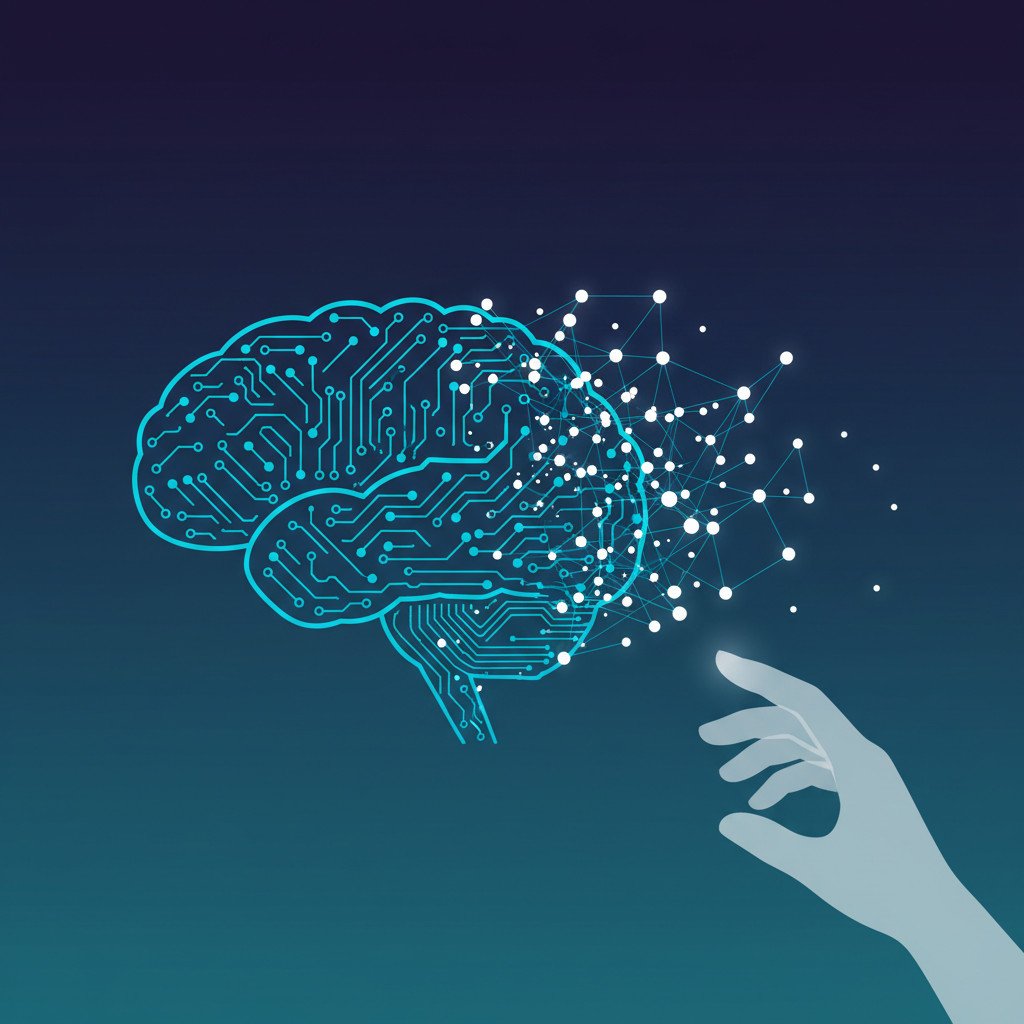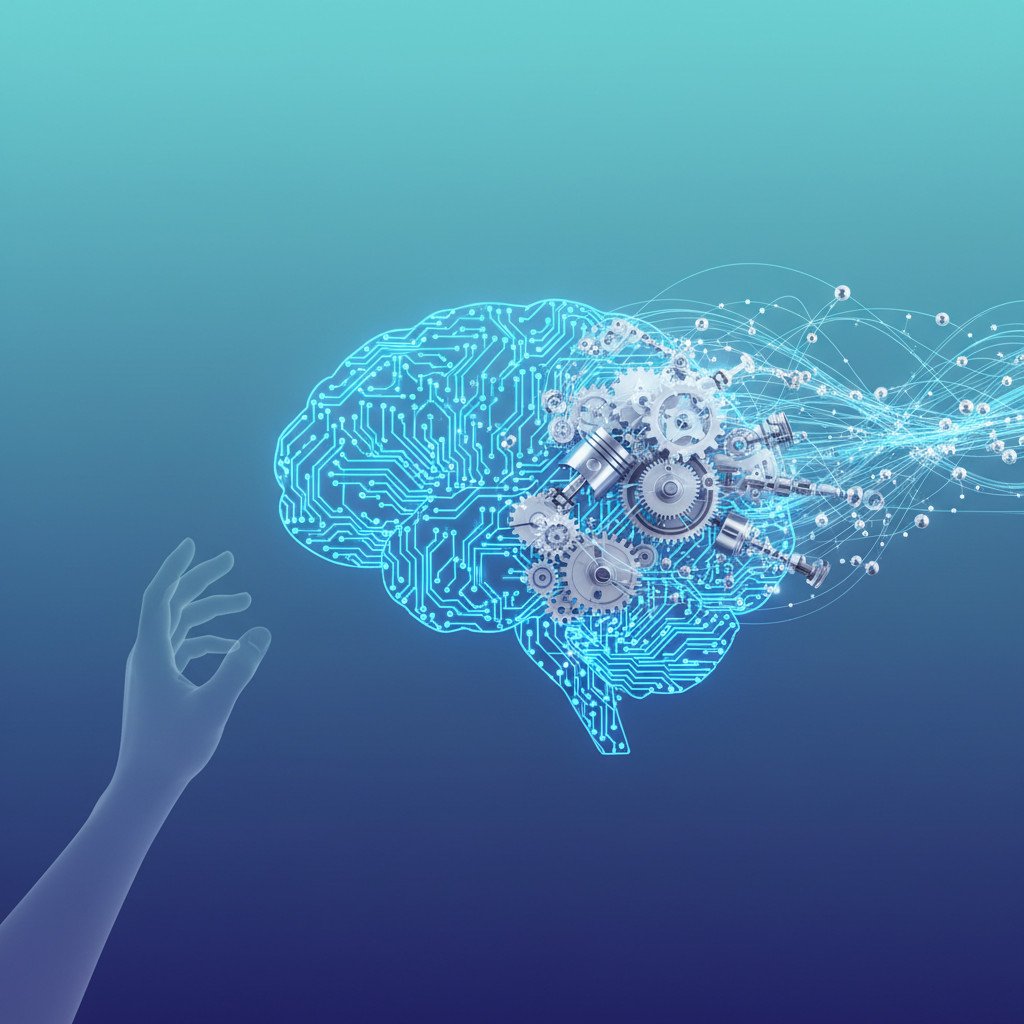AGI vs AI drives the conversation about today’s intelligent tools. On one hand, narrow AI recommends shows and writes emails. However, AGI is the promise of a single system that understands, learns, and reasons across domains.
For executives, the difference matters for strategy, risk, and investment. Imagine a marketing team that uses AI to personalize emails versus a general system that redesigns the entire campaign midflight. Because outcomes and costs differ, leaders must choose tools wisely. Therefore, this article breaks down technical terms, business implications, and practical next steps.
You will see clear contrasts between narrow AI, machine learning, and the idea of artificial general intelligence. Meanwhile, we will show what leaders can adopt today and why aspiring to AGI is not urgent. Read on to learn practical signals, vendor questions, and risk controls to prioritize now. This introduction sets the stage for executives who must balance opportunity with caution.
What is Artificial Intelligence?
Artificial Intelligence, or AI, is technology that performs tasks which normally require human thinking. In simple terms, AI learns patterns from data and then makes predictions or decisions. Because it relies on code and models, AI excels at specific tasks rather than general thinking.
In the AGI vs AI conversation, AI today refers to domain specific systems. These systems solve narrow problems like recognizing images, translating text, or recommending content. As a result, they power many tools you use each day.
Everyday and industry examples include:
- Search and recommendation engines that surface relevant results and shows. They analyze behavior and predict preferences.
- Email assistants that draft replies and summarize long threads. They save time and reduce repetitive work.
- Customer service chatbots that route tickets and answer basic questions. They scale support while lowering costs.
- Sales automation that enriches lead data and composes follow ups. For example, see how AI agents amplify brand reach in practice.
- Enterprise infrastructure that uses AI for monitoring and optimization. Therefore, teams can predict outages and improve performance. Learn how VMware integrates AI across infrastructure here.
AI also fuels advanced analytics in healthcare, finance, and manufacturing. For instance, models assist image interpretation in radiology and optimize supply chains. Meanwhile, executives must evaluate which AI fits their needs and risks.
For broader context on AI trends and product strategy, consider industry coverage of vendor roadmaps and privacy trade offs and technical overviews like IBM’s AI primer.

AGI vs AI: What is Artificial General Intelligence?
Artificial General Intelligence, or AGI, means a machine that can learn, reason, and solve problems across any domain. When comparing AGI vs AI, the key difference is generality. Standard AI specializes in one task. By contrast, AGI would transfer skills between tasks without task specific retraining.
AGI would combine perception, language, planning, and common sense. For example, an AGI could read a legal contract, write a marketing plan, and debug code. Meanwhile, it would adapt to new contexts like a human worker. Therefore, AGI promises flexibility that narrow systems lack.
Key differences in practice include:
- Transfer learning across domains rather than task specific models.
- Broad reasoning and real world understanding instead of pattern matching.
- Long term planning and goal setting across different problems.
Potential capabilities feel transformative. An AGI could design products from user feedback, run simulations, and explain trade offs. As a result, organizations might automate complex, cross functional decisions. However, true AGI would also raise governance challenges and ethical questions.
Theoretical implications are profound. AGI could shift economic power because it multiplies skilled labor. It might increase productivity, yet disrupt job markets. Moreover, AGI could pose safety risks if goals misalign with human values. Therefore, researchers stress alignment, transparency, and strict testing.
It is important to note we do not have AGI yet. Most current systems remain narrow and specialized. Research teams explore architectures and scaling laws, but timelines remain uncertain. Meanwhile, executives should focus on realistic AI adoption and risk controls rather than chasing hypothetical AGI features.
Practical signals to watch for include cross domain learning without retraining, consistent reasoning over long tasks, and safe goal alignment. Because these are rare today, leaders can prioritize governance, vendor scrutiny, and workforce reskilling now. In short, AGI remains a powerful idea. However, responsible strategy should balance long term hopes with immediate, practical AI work.
AGI vs AI comparison table
| Feature | Narrow AI (today) | AGI (hypothetical) |
|---|---|---|
| Capability scope | Excels at specific, domain focused tasks. | General understanding and cross domain reasoning. |
| Learning adaptability | Learns with task specific training and fine tuning. | Transfers learning across tasks without retraining. |
| Operational environment | Embedded in apps and services with fixed APIs. | Flexible across environments and tasks. |
| Current development status | Widely deployed and commercially mature. | Experimental and theoretical; no proven systems. |
| Typical use cases | Recommendations, image recognition, chatbots, automation. | Complex problem solving, research, multi step projects. |
| Decision making | Pattern matching and statistical prediction. | Planning, long term goals, and robust reasoning. |
| Explainability | Varies; often limited and model dependent. | Ideally transparent reasoning and explainable decisions. |
| Resource needs | Compute scales with model size and data. | Likely massive compute and continuous learning. |
| Potential impact on workforce | Automates routine and specialized tasks. | Could substitute broad skill sets and reshape jobs. |
| Governance and safety | Privacy, bias, and compliance issues matter. | Alignment, control, and existential safety concerns. |
| Time horizon and certainty | Near term and concrete benefits. | Uncertain timelines and speculative outcomes. |

Practical implications of AGI vs AI for business and society
Understanding AGI vs AI changes how leaders prioritize investments and risks. Today, most firms use narrow AI and machine learning to automate routine work. However, the possibility of AGI shifts long term strategy because AGI could handle cross functional tasks without retraining.
Key benefits
- Increased automation and efficiency. For example, AI streamlines customer support with chatbots and automates data enrichment in sales pipelines. As a result, teams free time for strategic work.
- Smarter intelligence systems. Machine learning models improve decision making with predictive analytics. Therefore, firms optimize marketing spend and supply chains based on real time data.
- Innovation acceleration. Because AI speeds up prototyping and research, companies bring products to market faster. Meanwhile, AGI could combine disciplines to design novel solutions across fields.
Main challenges
- Workforce disruption and reskilling. Automation replaces some roles. However, it also creates new roles that require data literacy and system oversight.
- Model bias and fairness. Machine learning models reflect training data. Therefore, biased inputs produce biased outcomes. Leaders must audit models and measure fairness.
- Operational complexity. Intelligence systems introduce new failure modes. For example, poorly tested automation can cascade errors across systems.
Ethical and governance considerations
- Accountability and transparency. Organizations must explain automated decisions. Because stakeholders demand clarity, explainability matters for trust.
- Safety and alignment. AGI would require robust alignment and control frameworks. Therefore, ethics and long term safety research should accompany technical work.
- Privacy and regulation. AI often uses personal data. As a result, firms must balance innovation with legal compliance and user trust.
Practical steps for executives
- Prioritize high ROI automation projects and measure outcomes.
- Invest in workforce reskilling and change management now.
- Implement model governance, audits, and incident playbooks.
- Monitor research for AGI signals, but focus budgets on deployable AI today.
In short, AI and machine learning deliver tangible value now. Meanwhile, AGI remains speculative but important to watch. Therefore, leaders should balance near term automation gains with governance and long term safety planning.
Future outlook for AGI and AI development
The next decade will see rapid progress in AI and machine learning. However, progress toward AGI remains uncertain. Researchers publish new architectures and scale models, and companies deploy more powerful intelligence systems. As a result, businesses must plan for near term gains and long term possibilities.
Emerging trends to watch
- Model scaling and efficient architectures that improve capabilities without linear compute growth.
- Multimodal learning that combines vision, language, and code, enabling richer intelligence systems.
- Agentization and automation where models coordinate tasks across services and apps.
- Privacy preserving techniques like federated learning and differential privacy.
- Increased regulatory focus and industry standards for safety and explainability.
Possible timelines and scenarios
- Near term (1 to 5 years): Continued advances in narrow AI and more robust automation. Many workflows will become AI augmented.
- Medium term (5 to 15 years): Cross domain systems may show stronger transfer learning. However, true AGI still remains unproven.
- Long term (15+ years): Some experts argue AGI could emerge, while others expect gradual, domain connected systems. Therefore, timelines vary widely.
How to prepare
- Prioritize scalable automation projects with measurable ROI. Meanwhile, invest in data quality and model monitoring.
- Build governance for model risk, bias auditing, and incident response. Because regulators will tighten rules, compliance will matter.
- Reskill staff for data literacy, prompt engineering, and system oversight. Also, encourage cross functional teams that combine domain experts and AI engineers.
- Monitor research for alignment breakthroughs and safe deployment patterns. Therefore, create an R&D watchlist and vendor scrutiny process.
Expect collaboration between startups, academia, and large labs to accelerate safe progress. Furthermore, public policy will shape incentives and guardrails. As a result, businesses that engage with regulators will gain advantage.
In short, narrow AI and machine learning will deliver concrete value now. Yet AGI remains speculative and uncertain. Thus, leaders should act now to capture automation benefits while preparing for broader shifts.

AGI vs AI matters for leaders who decide strategy, risk, and investment. AI is delivering measurable value today in automation, personalization, and analytics. However, AGI remains speculative and unproven, so executives should not chase myths. Instead, prioritize deployable intelligence systems that improve revenue and customer experience.
For example, automate lead enrichment, personalize outreach, and measure conversion lift. Meanwhile, address governance by auditing models, protecting data privacy, and building incident playbooks. Because workforce changes will follow, invest in reskilling and cross functional teams now.
EMP0, formally Employee Number Zero, LLC, helps businesses deploy AI and automation solutions focused on sales and marketing automation. Therefore, EMP0 builds AI powered growth systems that enrich leads, automate follow up emails, and orchestrate workflows across tools.
Learn more at the EMP0 website and follow practical guides on the EMP0 blog to explore services and case studies.
In short, treat AGI as a long term possibility and AI as an immediate tool.

